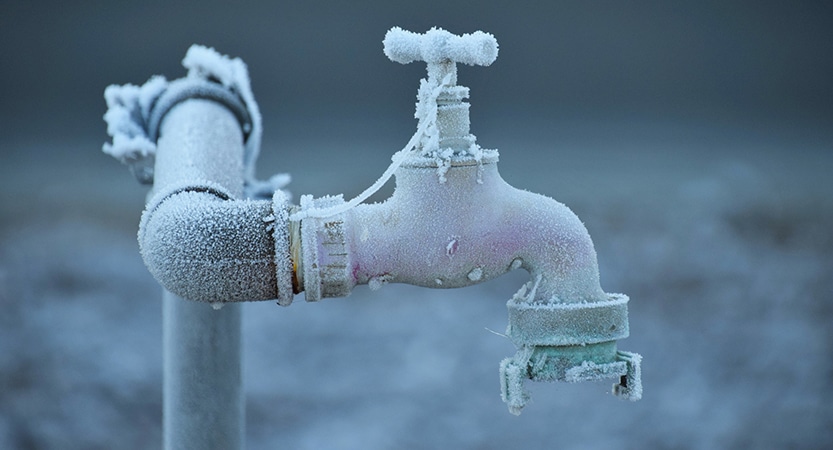Advice for Preventing Frozen Plumbing in Winter: Specialist Advice
Advice for Preventing Frozen Plumbing in Winter: Specialist Advice
Blog Article
Listed here on the next paragraphs you can discover some decent insights around How To Avoid Freezing Pipes.

Winter can wreak havoc on your pipes, especially by freezing pipes. Below's just how to prevent it from taking place and what to do if it does.
Introduction
As temperatures decline, the risk of icy pipes boosts, possibly bring about costly repairs and water damages. Comprehending how to stop frozen pipelines is vital for property owners in cool climates.
Understanding Icy Pipes
What triggers pipes to freeze?
Pipelines freeze when exposed to temperatures listed below 32 ° F (0 ° C) for extended periods. As water inside the pipelines ices up, it expands, putting pressure on the pipeline walls and potentially creating them to rupture.
Risks and problems
Icy pipes can result in water system disturbances, home damage, and expensive repairs. Burst pipes can flooding homes and trigger substantial structural damages.
Indications of Frozen Pipeline
Identifying icy pipes early can prevent them from breaking.
Exactly how to identify icy pipes
Try to find decreased water circulation from faucets, unusual smells or noises from pipes, and visible frost on revealed pipes.
Avoidance Tips
Insulating prone pipelines
Wrap pipes in insulation sleeves or use warm tape to protect them from freezing temperatures. Concentrate on pipelines in unheated or external areas of the home.
Home heating strategies
Maintain indoor spaces sufficiently heated up, especially locations with pipes. Open cabinet doors to enable cozy air to distribute around pipelines under sinks.
Securing Outdoor Pipes
Garden tubes and outdoor taps
Disconnect and drain yard pipes before winter. Set up frost-proof spigots or cover outdoor taps with shielded caps.
What to Do If Your Pipes Freeze
Immediate activities to take
If you believe frozen pipelines, keep taps open to alleviate stress as the ice melts. Utilize a hairdryer or towels soaked in warm water to thaw pipes gradually.
Long-Term Solutions
Structural adjustments
Take into consideration rerouting pipes far from exterior wall surfaces or unheated areas. Include extra insulation to attics, cellars, and crawl spaces.
Upgrading insulation
Buy premium insulation for pipes, attic rooms, and walls. Appropriate insulation aids maintain constant temperature levels and reduces the risk of frozen pipelines.
Conclusion
Stopping icy pipelines requires proactive procedures and fast feedbacks. By understanding the causes, signs, and preventive measures, home owners can shield their pipes throughout winter.
Helpful Tips to Prevent Frozen Pipes this Winter
UNDERSTANDING THE BASICS: WHY PIPES FREEZE AND WHY IT’S A PROBLEM
Water freezing inside pipes is common during the winter months, but understanding why pipes freeze, and the potential problems it can cause is crucial in preventing such incidents. This section will delve into the basics of why pipes freeze and the associated problems that may arise.
THE SCIENCE BEHIND FROZEN PIPES
When water reaches freezing temperatures, it undergoes a physical transformation and solidifies into ice. This expansion of water as it freezes is the primary reason pipes can burst. As the water inside the pipe freezes, it expands, creating immense pressure on the walls. If the pressure becomes too great, the pipe can crack or rupture, leading to leaks and water damage.
FACTORS THAT CONTRIBUTE TO PIPE FREEZING
Low Temperatures: Extremely cold weather, especially below freezing, increases the risk of pipes freezing. Uninsulated or Poorly Insulated Pipes: Pipes located in unheated areas, such as basements, crawl spaces, or attics, are more prone to freezing. Insufficient insulation or lack of insulation altogether exacerbates the problem. Exterior Wall Exposure: Pipes running along exterior walls are susceptible to freezing as they encounter colder temperatures outside. Lack of Heating or Temperature Regulation: Inadequate heating or inconsistent temperature control in your home can contribute to frozen pipes. PROBLEMS CAUSED BY FROZEN PIPES
- Pipe Bursting: As mentioned earlier, the expansion of water as it freezes can cause pipes to burst, resulting in significant water damage.
- Water Damage: When pipes burst, it can lead to flooding and water damage to your property, including walls, ceilings, flooring, and personal belongings.
- Structural Damage: Prolonged exposure to water from burst pipes can compromise the structural integrity of your home, leading to costly repairs.
- Mold and Mildew Growth: Excess moisture from water damage can create a favorable environment for mold and mildew growth, posing health risks to occupants.
- Disrupted Water Supply: Frozen pipes can also result in a complete or partial loss of water supply until the issue is resolved.
WHY CERTAIN PIPES ARE MORE PRONE TO FREEZING
- Location: Pipes located in unheated or poorly insulated areas, such as basements, crawl spaces, attics, or exterior walls, are at higher risk of freezing.
- Exterior Pipes: Outdoor pipes, such as those used for irrigation or exposed plumbing, are particularly vulnerable to freezing as they are directly exposed to the elements.
- Supply Lines: Pipes that carry water from the main water supply into your home, including the main water line, are critical to protect as freezing in these lines can affect your entire plumbing system.
- Underground Pipes: Pipes buried underground, such as those connected to sprinkler systems or outdoor faucets, can be susceptible to freezing if not properly insulated.
https://busybusy.com/blog/helpful-tips-to-prevent-frozen-pipes-this-winter/

I discovered that blog posting about Prevent Frozen Pipes when browsing the internet. Are you aware of someone else who is occupied with the niche? Take a moment to share it. Thank you for going through it.
Book 24/7 Report this page